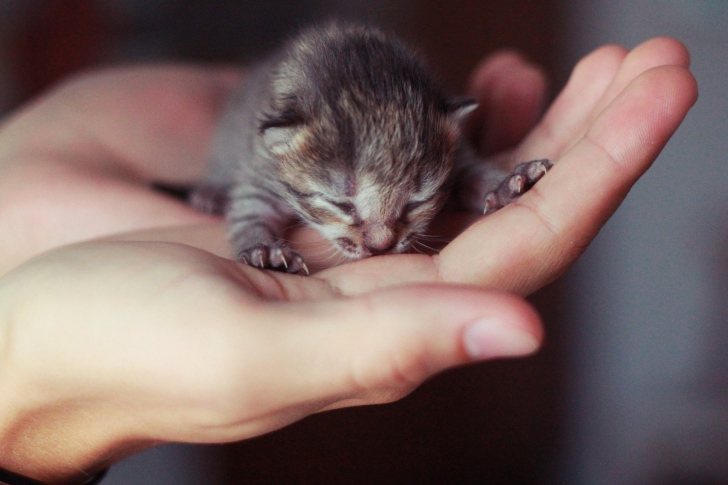What To Do (and Not Do) When You Find Newborn, Infant or Young Kittens
PART I. Before moving kittens you think have been abandoned, please consider:
- Their mother offers kittens their best chance for survival. Mothers must leave their kittens to seek food and water and to eliminate their bladder and bowels.
- It is also common for mothers to give birth in protected places, safe from predators. This may include places that are awkward or uncomfortable for her to spend long periods of time in. She may come and go just to nurse them (which her own body will alert her to).
- Caring for nursing kittens oneself is a rewarding, but demanding, round the clock commitment. AND they have a better chance of survival if they remain with the mother.
- The Pima Animal Care Center (PACC) does will always attempt to meet the challenge to provide nursing kittens the care they require. Those that are brought there need emergency foster or rescue by closing time (5 or 7pm) the same day they arrive so they will survive. Therefore bringing them there when they could have been with their mama is not helpful.
Recommendations:
- Wait and watch to determine whether their mother is coming back for them or if they are truly abandoned.
- Observe the kittens from afar – a minimum of 35 feet or more. Do not stand too close! Use binoculars or your camera zoom if needed. You may need to go completely away before the mother cat will return which could be several hours or longer (up to 6-12 hours) dependent on several factors. Some people recommend putting a light dusting of flour around the area which can show footprint if the mother has returned. Please be mindful of ants.
- Continually checking on them can put the mother on alert and keep her away. Healthy kittens can survive this period without her.
- Assess if the kittens are in immediate danger and weigh risks: Are there reactive dogs in the yard? Are the kittens located near heavy vehicular traffic? Are temperatures dropping dangerously low? Remove the kittens ONLY if they are in immediate, grave danger.
If the mother cat returns:
- Leave the kittens with their mother until they are able to eat on their own. Consider providing food and water for the mom while she raises the kittens. Keep the food and water a distance away from the kittens to not attract or concern the mother about potential predators and so she is not tempted to relocate them.
- Kittens will begin eating wet food around 4 weeks of age, however, 5-6 weeks of age is the optimal age to separate them from a feral mother for socialization. They will tame quickly with best practices and can easily eat on their own. Isolating them to a large dog crate or bathroom where you can work with them in a controlled environment is best, as opposed to a large room where there are difficult to access hiding places such as under beds.
- Older kittens (8-16 weeks and up) require more effort to socialize and some may not become fully socialized. These can be Trap-Neuter-Returned AT NO COST. This usually includes spay/neuter, vaccinations and a left ear tip to indicate they have been altered.
- Kittens can go into heat as young as 5 months and females can become pregnant with a new litter while they are still nursing! GET THE MOTHER SPAYED (AND ANY OTHER CATS IN THE AREA through the no cost program) including neutering the males who can impregnate many females. There are many other benefits to spay and neuter. Humane traps are available for no cost loan and volunteers to guide you in the process.
If the mother cat does not return and the kittens are not old enough to eat on their own:
- Remove the kittens, however, be aware it is unlikely that you will find an organization with available staff or volunteers to take on emergency bottle-feeding on short notice.
- Newborn and infant kittens are at high risk if brought to municipal shelters, but there are many resources available to guide you on how to provide for them until they are old enough to eat on their own.
- Kittens that are eating on their own, but are not of age and weight to be spayed and neutered for adoption are also at risk. They have undeveloped immune systems and in a high density shelter environment, often develop serious respiratory infections which may become chronic, cause damage to an eye or loss of vision, and can even be fatal. Long term kenneling is not good for their socialization and also significantly limits the space available for other incoming cats.
- If you feel you cannot re-home found kittens on your own, but are willing to raise and socialize them as a foster, the best time to return them to PACC for adoption is at approximately 2 pounds or 8 weeks when they are ready to be altered to prepare them for adoption. Talk to a PACC representative about becoming a foster. Fosters are provided with training, needed supplies and veterinary care.
- If you are willing to re-home adoptable kittens PLEASE get them altered first. There are no or low cost programs and services.
Other points to consider:
- If there is a single kitten or two, it is possible that the mother is in the process of relocating them. Remember, she can only move them one at a time in her mouth.
- If the kittens bellies are rounded and feel warm/full then their mother has recently fed them.
- If the kittens appear sick (i.e. eye and/or respiratory infections, diarrhea) they may need to be removed from their mother’s care for treatment.
- Unsocialized, wild/feral cats are not considered adoptable as pets in shelters and should be Trap-Neuter-Returned or they may be put down. The same is true for kittens that are too old for socialization in the shelter.
- ***Feral cats should not be relocated!!! Relocation is an ABSOLUTE LAST RESORT ONLY IF THEIR LIVES ARE IN IMMINENT DANGER! Finding a suitable placement and following STRICT ACCLIMATION PROTOCOLS are critical to increase their chances of survival. See important information on this in Part Two of this handout.
PART II. Resources and Detailed Information
More Information on What To Do (and NOT do) When Finding Kittens
Raising Bottle Babies Best Friends and Maddies Fund
Socialization/Taming
- http://www.alleycat.org/page.aspx?pid=292 http://urbancatleague.org/TamingFerals
- http://www.animalalliancenyc.org/wordpress/2012/02/always-trap-feral-kittens-dont-chase-em-down-and-bag-em/
- http://www.urbancatleague.org/FeralFAQ
TNR Scenarios With Moms and Kittens
Trap Neuter Return (TNR) in Pima County
Re-homing and Screening Potential Adopters
Why FeLV/FIV Testing is NOT a Standard Practice in Trap Neuter Return (TNR) Neighborhood Cats | How to TNR | FIV/FeLV Testing
“Orphan Kitten Bottle Feeders and Fosters” Facebook group
Why Relocation is an ABSOLUTE LAST RESORT and ‘How to’
***Thank you to Valerie Sicignano of the NYC Feral Cat Initiative for her online post ‘What to Do (and NOT Do) If You Find a Newborn Kitten’, the inspiration and starting point for this document.


